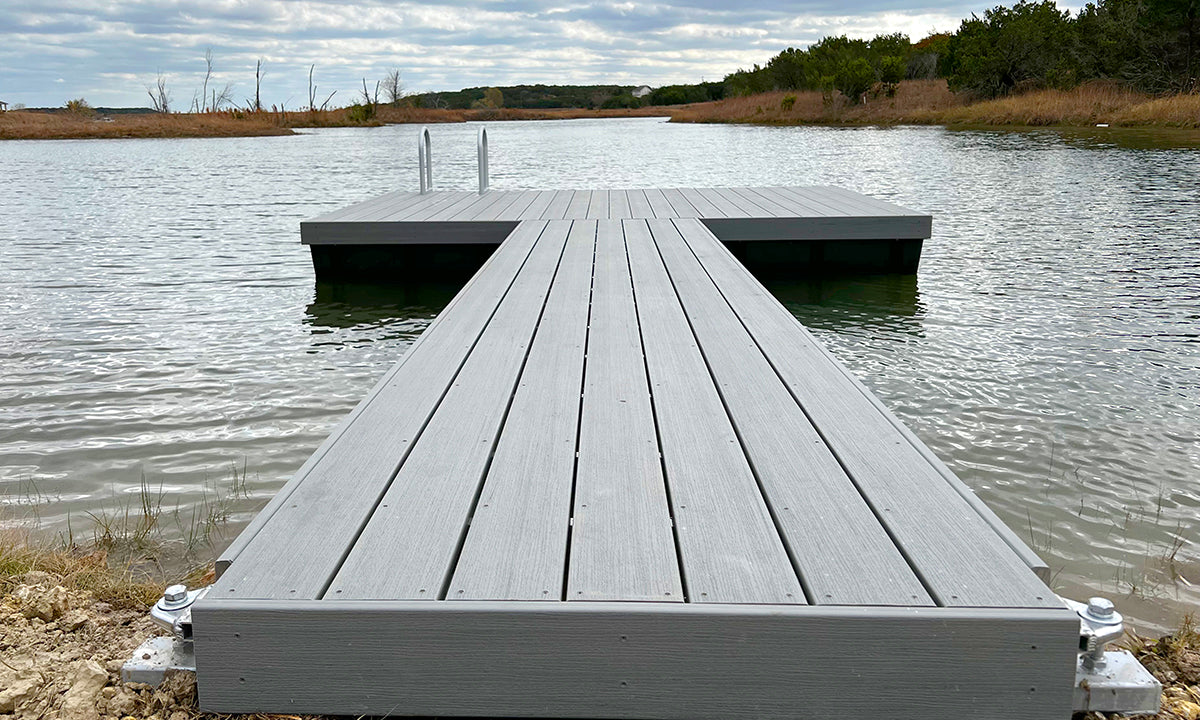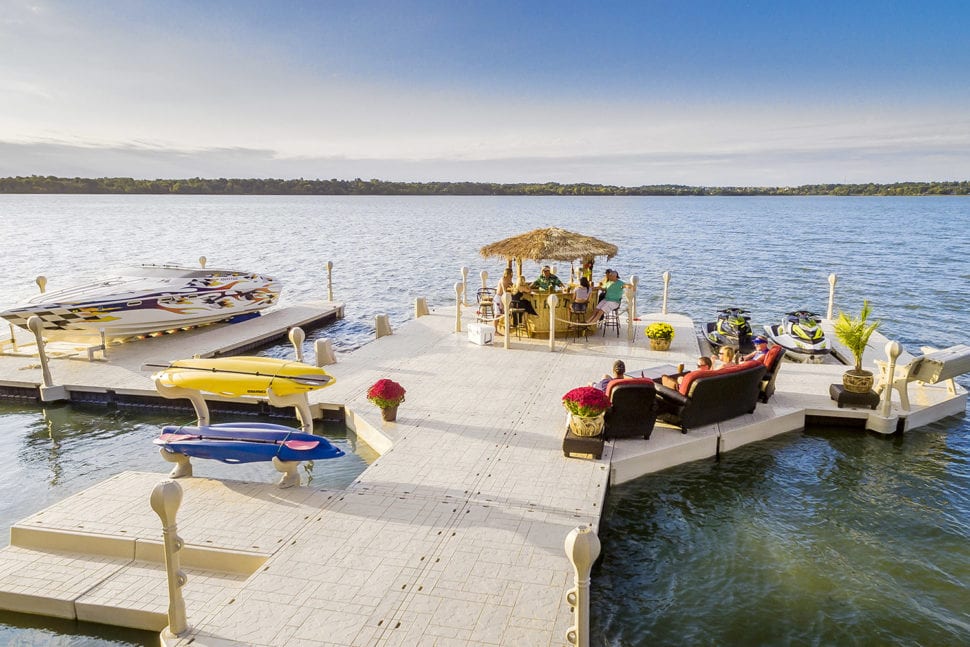Cutting-edge Floating Docks: The Future of Waterfront Access and Entertainment
Cutting-edge Floating Docks: The Future of Waterfront Access and Entertainment
Blog Article
Produce the Perfect Docking Service With Floating Docks
Floating docks existing a versatile solution for a variety of maritime needs, adapting effortlessly to fluctuating water degrees and diverse vessel kinds. Their modular nature permits for fast setup and relocation, yet the selection of proper products and design features is important for making certain both capability and aesthetic appeal. As we discover the necessary elements that add to the efficiency of floating docks, numerous key variables pertaining to security and upkeep will emerge, increasing concerns regarding exactly how to enhance your docking experience. The succeeding conversation will certainly light up these vital factors to consider.

Benefits of Floating Docks
Floating docks deal countless advantages that make them a suitable selection for different maritime applications. Unlike fixed docks, floating docks rise and fall with the tide, guaranteeing constant accessibility for vessels.
Additionally, floating docks are commonly less complicated and quicker to mount compared to typical set structures. Their modular design enables for simple assembly and disassembly, promoting upkeep and moving when necessary. This adaptability is particularly valuable for short-term applications or in settings where conditions may alter.
Floating docks likewise tend to be more eco friendly, as they minimize disruption to the seabed and surrounding aquatic ecosystems. Their buoyant nature lowers the danger of damage to aquatic life, advertising a healthier setting. Additionally, these docks can be customized to fit various vessel dimensions, guaranteeing that they meet particular functional needs - floating dock company.
Ultimately, the combination of flexibility, simplicity of installation, and environmental factors to consider makes floating docks an extremely effective remedy for a variety of maritime needs.
Choosing the Right Materials
Picking the ideal materials for floating docks is critical to make sure durability, durability, and security. The selection of products straight influences the dock's efficiency in numerous ecological conditions, consisting of direct exposure to water, sunshine, and potential wear from marine traffic.
Typical materials made use of for floating docks consist of light weight aluminum, wood, and high-density polyethylene (HDPE) Aluminum is lightweight, corrosion-resistant, and requires marginal upkeep, making it an outstanding choice for longevity. Its initial price can be greater compared to other materials.
Timber, while cosmetically attractive and supplying a standard look, can be vulnerable to rot and insect damage otherwise properly dealt with. Using pressure-treated timber or normally resilient species like cedar or redwood can mitigate these issues.
HDPE is a popular selection as a result of its resistance to UV rays and chemicals, along with being eco-friendly. floating dock services. It is readily available and lightweight in numerous colors, enabling for customization
Eventually, the ideal product option will rely on particular needs, including budget plan, wanted looks, and environmental considerations. Mindful evaluation of these variables will cause a resilient and successful floating dock remedy.
Design Factors To Consider for Stability
When designing floating docks, ensuring stability is a basic element that can significantly impact their capability and safety. Stability in floating dock layout is affected by different factors, including buoyancy, weight circulation, and the setup of parts. An optimum buoyancy system must utilize products that offer enough lift while reducing weight. This equilibrium makes sure that the dock stays above water, also under differing lots.
Weight circulation is crucial; uniformly dispersing lots throughout the dock protects against tilting and improves stability. This can be accomplished via strategic placement of docking devices, such as cleats and fenders, over at this website in addition to appropriate spacing of drifts. In addition, the measurements of the dock must be thoughtfully prepared. Broader layouts can supply raised stability, especially in rough water conditions, while longer docks might call for added supports to avoid sagging.
Another key consideration is the environmental influence, consisting of wave action and wind. Incorporating features such as sidewalls or skirting can aid reduce the effects of ecological pressures, maintaining security in unfavorable conditions. Ultimately, a mix of thoughtful style, product choice, and understanding of ecological elements will generate a floating dock that fulfills both security and safety demands.
Installation Tips and Methods

Next, secure the necessary authorizations and stick to local policies, which may dictate installation approaches and environmental factors to consider. If needed, engage a certified professional experienced in floating dock installations. Usage high-quality materials made for aquatic atmospheres to improve toughness and long life.
When positioning the dock, straighten it identical to the shoreline to promote easy accessibility. Make certain that the anchoring system is robust, employing cinder block or helical supports to support the dock against wind and wave activity. It's vital to represent seasonal water degree variations, consisting of possible ice movement in chillier climates.
Throughout the installment, verify the dock's floatation and stability prior to completing the anchoring. Routinely check the installation for any signs of wear or damages. By complying with these strategies and pointers, you can accomplish a safe and secure, practical, and cosmetically pleasing floating dock installment that fulfills your needs.
Maintenance and Treatment Standards
Keeping and caring for floating docks is essential to lengthening their life-span and guaranteeing safe use. Normal find out here inspections ought to be carried out to determine any type of indications of wear, damages, or aquatic development. Try to find splits, loosened installations, or discolored areas on the dock's surface area, as these issues can compromise architectural honesty.
Cleaning is necessary. Make use of a stress washing machine to get rid of algae, barnacles, and debris, which can build up in time. For persistent growth, consider ecologically pleasant cleansing representatives that won't hurt water life.
Furthermore, check the mooring lines and anchors often to guarantee they are safe and cost-free from deterioration. Replace any type of frayed or damaged lines quickly to preserve stability.
During severe weather, such as storms or freezing problems, take preventive measures. Secure the dock with additional mooring lines and, if viable, remove any removable parts to avoid damages.
Final Thought
In final thought, the implementation of floating docks provides a reliable and flexible docking service suitable for different maritime applications. Their adaptability to rising and fall water degrees, integrated with a modular design, allows for easy modification and moving. Selecting ideal products improves both toughness and visual allure, while mindful consideration of security guarantees safety and long life. With appropriate installation and routine upkeep, floating docks can give trustworthy and reliable docking experiences for a vast range of vessels.
As we discover the essential aspects that add to the efficiency of floating docks, several essential variables pertaining to stability and maintenance will certainly arise, elevating questions concerning just how to maximize your docking experience. Unlike repaired docks, floating docks surge and loss with the tide, making sure regular ease of access for vessels.When making floating docks, making sure security is a basic facet that can substantially influence their functionality and safety. Stability in floating dock style is affected by various elements, including buoyancy, weight distribution, and the plan of elements. Ultimately, a mix of thoughtful style, material choice, and understanding of environmental elements will certainly yield a floating dock that meets both security and check here safety and security requirements.
Report this page